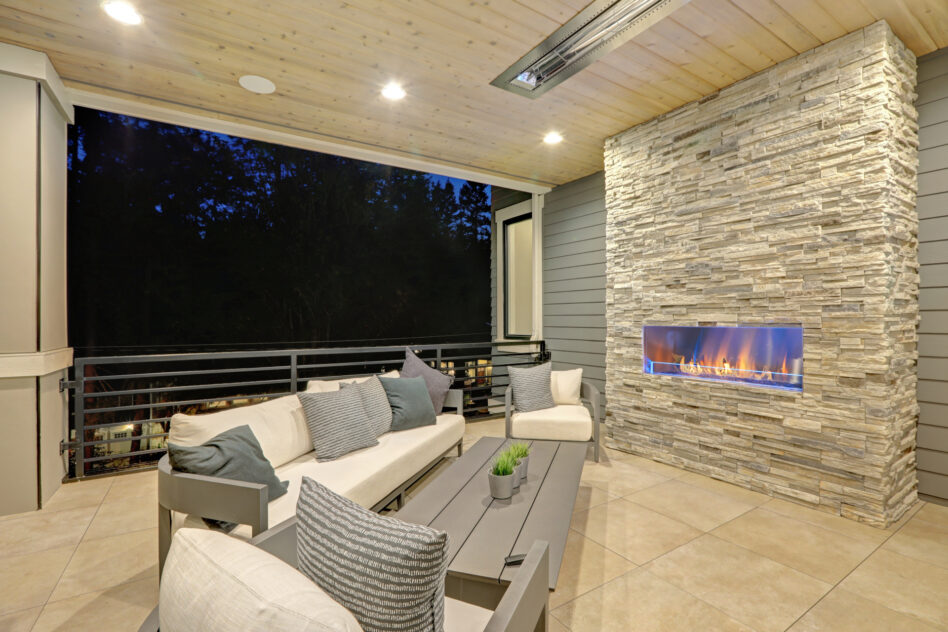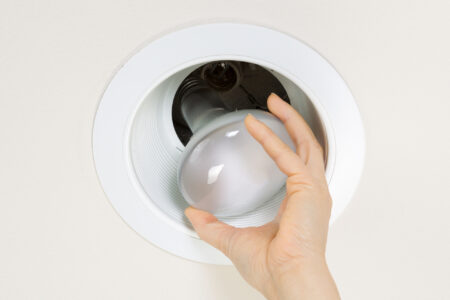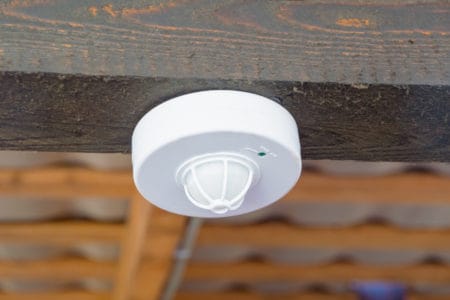Recessed lights are a massive craze for many reasons, including their brightness level, energy efficiency, clean finish, and the ability to match and design style. Getting your recessed lighting right is essential for good illumination that is light and bright enough.
Recessed lights need proper spacing to ensure no corner is left unlit, but before you can space them and give the housing a home, you need to figure out how many recessed lights you need to fill up the room. To nail the perfect recessed lighting, you’ll need to factor in your ceiling height, room size, and the type of lighting you require.
Calculating How Many Recessed Lights You Need
Recessed lighting will take some planning where to place each light and how many wattage/lumens to use for each bulb. This guide includes common formulas to give you a broad understanding how to estimate the best number of recessed lights.
But before you go ahead and make holes in your ceiling we highly recommend to ask a professional to confirm your calculations or even to help you with the construction work.
The first part of calculating the right amount of recessed lights is determining your lighting goals. You could be looking to light specific areas or cover an entire room. Whatever your aim is, there is a way to determine how many lights you need by considering the measurements of your floor area, roof height, bulb wattage, spacing, and recessed light size.
To start, the kind of lighting you’ll need will be one of the following:
- Ambient/everyday lighting: This lighting scheme aims to illuminate the entire area of a room evenly as the primary light source.
- Task lighting: This type focuses on illuminating workspaces like kitchen counters.
- Accent lighting: Aims to illuminate specific features like an artwork.
- Wall washing: A type of accent lighting used to light up an entire feature wall.

How Recessed Light Calculations Work
Recessed lights focus light downwards in a cone shape. They have sizes ranging from 2 to 8 inches, but the most used size is 6 inches. The higher your ceilings are, the larger the size must be for proper illumination.
There are formulas you need to be aware of to calculate how many lights you need and their spacing based on the square footage of the area you’d like to light and the required wattage for even lighting. The first step is to measure the room’s floor area (e.g., 10 feet long x 15 feet wide = 150 square feet)
From your measurements, you can further calculate the wattage required, which gives you an idea of the number of lights needed. Spacing goes according to the height of your ceiling and the number of lights you have.
Ambient/Everyday Lighting
Ambient lighting aims to illuminate the entire area evenly for general lighting purposes. To determine how many lights you need, figure out the total wattage required to lighten the room’s size.

Watts refers to the power needed to light up the bulb. The following formulas are for incandescent bulbs. See next paragraph how to convert the factor for LED bulbs.
Total square footage of the room x 1.5 = total wattage
Then you divide the total watts by the wattage of the light bulbs you’re planning through this formula:
Total wattage ÷ bulb wattage = number of recessed lights
For example:
150 square feet x 1.5 = 225 watts
225 total watts ÷ 60-watt bulb = 3.75 lights
(rounding up to a total of 4 recessed lights)
If you have a very high ceiling, or you need a lot more brightness for dark spaces like basements, you’ll want to multiply by 3 instead of 1.5 in the first formula.
So, it would look like this:
150 square feet x 3 = 450 watts
450 total watts ÷ 60-watt bulb = 7.5 lights
(rounding up to 8 recessed lights)
Understand The Wattage
Wattage is a simple measurement to determine how much lighting your space needs. LED bulbs are the most common choice nowadays but have different wattage measurements than an incandescent bulb. For LED lights, you’ll find something like an 8-watt bulb which would give astronomical and unrealistic numbers!
To get the calculation right with LEDs, you should first determine their incandescent wattage equivalent by means of their box or online product description. A typical 8-watt LED is usually equal to 60 watts.
Here is a simple table of incandescent and LED wattage compared to one another:
| Incandescent Wattage | LED wattage |
| 40W | 6-7W |
| 60W | 7-10W |
| 75W | 12-13W |
| 100W | 14-20W |
| 150W | 25-28W |
Considering Lumens
Lumens is a newer measurement that measures brightness rather than the power the light bulb uses, which is arguably a better measurement when working out how many light bulbs you’ll need.
Although the previously mentioned formulas are watt-based, they still consider the brightness level produced as wattage was the original brightness measurement! If the brightness level per light bulb is your concern, the higher the wattage, the brighter it will be.

As you know from the formula, the higher the wattage, the fewer bulbs there will be because of the elevated lumen count. If you want fewer light bulbs, you’ll want a higher wattage and, therefore, higher lumens. Brighter lights are suggested for bigger rooms and higher ceilings.
Keep Spacing In Mind
The spacing of your recessed lights will also indirectly determine how many lights you need. Your light spacing is defined by your roof height ÷ 2. So, if your roof is 8 feet tall, you’ll need the recessed lights to be at least 4 feet apart.
Earlier, we calculated that a 150 square-foot area requires four 60-watt lights, and now with an 8-foot ceiling, they should be 4 feet apart. If you have an abnormally shaped floor area, four lights 4 feet apart might look odd, and you’ll want to opt for a lower bulb wattage so you can use more lights.

If you have an abnormal floor area layout, such as an L-shape, you should divide the room into two rectangles and separate the lights proportional to the areas. Other abnormal floor areas would benefit from more low-wattage lights than a small number of high-wattage ones.
Another component of how many recessed lights you’ll need is considering the distance they should be spaced in rows and from the walls. You’ll first need to determine how many lights you want at the room’s length. For this example, say you have six lights to place, and you want two rows of three lights each.
Calculating Spacing
The length spacing equals the room’s length ÷ number of lights in a row. To calculate the wall distance, you divide the length calculation answer in half and do the same with the width calculation. The distance between recessed lights at the room’s width is the width in feet ÷ number of lights in the row.
For example:
6 lights in 2 rows of 3
15 feet length ÷ 3 lights in a row = 5 feet between each lengthwise
5 feet distance ÷ 2 = 2.5 feet distance from the wall lengthwise
10 feet width ÷ 2 lights in a row = 5 feet between each light along the room’s width
5 feet distance ÷ 2 = 2.5 feet from the wall widthwise
Recessed Lighting Size
Does the size of the recessed light matter? When calculating how many lights you need, the size doesn’t matter all too much in the range between 4 and 6 inches. The wattage evens out the brightness throughout the space.
However, bigger-sized recessed lights suit larger areas with high ceilings as the light will spread over more footage, but if you want focused light on particular areas, you should opt for smaller recessed lights. Smaller recessed lights also suit small rooms and low ceilings better.
Task Lighting
Task lighting aims to illuminate workspaces such as countertops and desk spaces. You should use fewer lights with a higher wattage and lumens. Successful task lighting gets measured in lumens and benefits from the following formula:
square footage of task area x 50 = required lumens
Accent Lighting And Wall Washing
Accent lighting and wall washing lights should be placed in an even row between 1.5 and 3 feet from the wall. Accentuated features only require one or two lights, depending on how large the featured object is.

Wall washing needs as many lights as can fit in the concept of wall distance = spacing distance. So, you divide the length of the wall by the distance from the wall to find the number of lights you need, rounded down.
The calculation would look like this:
10 feet length ÷ 2.5 feet distance = 4 recessed lights
Considering Other Lights To Calculate Recessed Lights
You’ll want to consider your existing lights before adding recessed lights. You can base your calculations on a wattage formula.

The wattage formula is exactly the same as the original recessed light calculation formulas. (Total square footage of the room x 1.5 = total wattage and Total wattage ÷ bulb wattage = number of recessed lights) but before the second formula, deduct the existing watts.
Like this:
150 square feet x 1.5 = 225 watts
225 watts – 120 existing watts = 105 watts
105 watts ÷ 40-watt bulb = 2.63 rounding up to 3 recessed lights
If you’re installing recessed lights to an existing lighting scheme, it makes the most sense to opt for bulbs with a lower wattage. Doing so ensures that you install more and space them out evenly instead of having one random and lonesome light.






